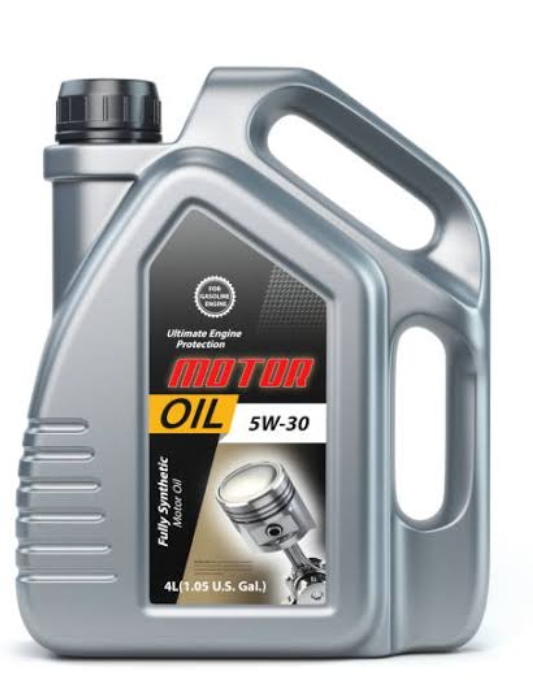
Engine oil functions as lubricant, coolant and cleaner to the engine. In fact, it is a wonder liquid. However, it is worthy of mention that not all engine oils are good for the engine. It is very important for a motorist to know the grade of the engine oil his car needs. This will help him get a good performance and enjoy his engine for a longer time. He must avoid the mistake of insisting on popular brands with incompatible viscosity grades.
FACTS ABOUT ENGINE OILS
There are three types of engine oil. They are:
1. Mineral oil: This is the crudest and the first type of oil, refined without treatment. One has to add treatment before use. This type of oil paved the way for the modern types of oil. It is cheaper in the market and can not lubricate and protect your engine like modern oils. It is used for old engines.
2. Semi synthetic oil: This type of oil plays an intermediate role between mineral and full synthetic oil. It offers the affordability and tripled performance of mineral oil. Here, a small amount of full synthetic oil is mixed mineral oil. They do not offer as much protection as full synthetic oil. Therefore it is best to drain within 5000 kilometers of usage.

Semi Synthetic oil
3. Full synthetic oil. Just as the name implies, this is the climax of oils. It is the best of oils. It delivers excellent protection and contributes greatly to fuel efficiency. Full synthetic oil has maximum treatment and is very expensive to manufacture which makes it significantly expensive to buy. It functions at their optimum in both low and high temperatures.

Fully synthetic Oil
Engine Oils Have Different Grades. Some motorists have this belief that all oils are the same as long as they can perform lubrication. That is far from the truth. Engine oils actually have different grades and these are according to their viscosities as established by the Society of Automotive Engineers (SAE)
Viscosity the rate of the oil’s resistance to flow. In a lay man’s language, the measure of the oil’s thickness. A lubricant with low viscosity will flow more easily than the one with high viscosity.
As the engine is affected by temperature, the grade of a particular one should contain information on the use and flow of the oil when hot and cold
Monograde Oils are mainly for small temperatures and old vehicles. They have low viscosity and are designed for use in the winter periods. They can be identified by their low viscosity and the markings on their containers. They are usually marked with the letter ‘W’ which stands for winter. In monograde oil, you have inscriptions like: 0W, 5W, 10W, 15W, 20W and 25W.
Note here that the numbers are only on one side of the ‘W’
Multigrade Oils are the most popular among oils in that modern vehicles use it more. They have the advantage of serving in all seasons, they adapt more to varying temperatures.
The containers of a multigrade lubricant or oil have numbers on both sides of the ‘W’ unlike the containers of the monograde oils. These numbers explain the oil’s ability to cope with different temperatures.
In multigrade oils, you find inscriptions like: 5W30, 15W40, 10W40 etc. they are called viscosity grades. What do they mean?
As in monograde oils, the ‘W’ stands for winter. The number before the ‘W’ represents the viscosity grade at low or cold temperature. The lower this number, the easier it is for the engine to start when cold.
The value after the ‘W’ represents the engine oil viscosity grade at normal operating temperatures. A higher grade here means a better lubrication and protection of components at normal operating temperature.
In multigrade oils, you find inscriptions like: 5W30, 15W40, 10W40 etc. they are called viscosity grades. What do they mean?
As in monograde oils, the ‘W’ stands for winter. The number before the ‘W’ represents the viscosity grade at low or cold temperature. The lower this number, the easier it is for the engine to start when cold.
The value after the ‘W’ represents the engine oil viscosity grade at normal operating temperatures. A higher grade here means a better lubrication and protection of components at normal operating temperature.

Multigrade Oil
SUMMARY
In choosing the right oil for your car, first check the recommended type by your car manufacturer. Use the recommended type and your car will perform excellently.
Take your location and the season into consideration. If you operate in an area of low atmospheric temperature, you may need to consider using a monograde oil.
If you must use a multi grade oil, go for the ones with higher viscosity grade at normal operating temperatures to ensure better lubrication and protection of engine components.
Thanks In Advance For Sharing
Leave a Reply